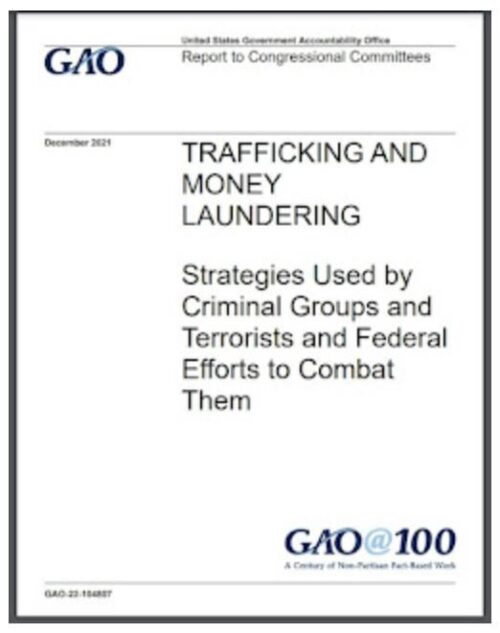Prosecutors, Detector Dogs, and Laws: 6 Law Enforcement Recommendations to Combat Transnational Cultural Heritage Trafficking
Police and prosecutors need additional tools to build capacity, spot contraband, and capture the criminals. Here are six recommendations.
 At least two federal prosecutors should be assigned to focus exclusively on cultural heritage trafficking. One might be placed in the U.S. Department of Justice in Washington , DC and another in the criminal division at the U.S. Attorney’s Office for the Southern District of New York, the heart of America’s art and antiquities marketplace.
At least two federal prosecutors should be assigned to focus exclusively on cultural heritage trafficking. One might be placed in the U.S. Department of Justice in Washington , DC and another in the criminal division at the U.S. Attorney’s Office for the Southern District of New York, the heart of America’s art and antiquities marketplace.Only federal prosecutors have authority to prosecute federal felony crimes like importing goods illegally or falsifying import paperwork, crimes which are typically part of antiquities trafficking.
While there have been several commendable cases where federal authorities have seized contraband antiquities and sent them back to their country of origin–particularly in New York City–few have resulted in criminal convictions. This “seize and send” policy must mature into an “investigate and indict” objective, where authorities hold individuals accountable through convictions and criminal penalties. Otherwise thieves, smugglers, fences, and their accomplices will continue to experience no specific deterrence or general deterrence that the criminal justice system uses to curb criminal conduct.
Already the seizure and forfeiture of cultural property in federal court depends on a U.S. Attorney proving that a criminal statute was violated. So it only makes sense that the individuals who commit the underlying crime should be prosecuted too. Once cultural objects are sent away to their country of origin through the seizure and forfeiture process, there is no case left to prosecute because the primary evidence has been sent away, an outcome that occurred even in a case where investigators suspected terrorist financing.
Without federal prosecutions, U.S. attorneys fail to develop the trial or investigative skills needed to uncover and describe to juries criminal networks and their subtle money trails, clandestine trafficking routes, and shell corporations used to move contraband cultural property into the American marketplace.
Specialized prosecutors would be expected to work together to support Homeland Security Investigations and the FBI, which in turn would sharpen prosecutors’ white collar crime skills to help guide investigations, craft search warrants, present cases before grand juries, and try cases in the courtroom. The art and cultural property theft cases successfully handled by the team of former Assistant U.S. Attorney Robert Goldman and former FBI Special Agent Robert Wittman serve as an illustration. Roger Atwood’s Stealing History tells some of their stories.
#2 State prosecutions
 Matthew Bogdanos, a prosecutor at the New York County District Attorney’s Office, is pioneering efforts to apply state law to cultural property crimes. One example is the conviction he secured in the case of People v. Aaron Freedman. Manager of Subhash Kapoor’s Art of the Past gallery in New York City, Freedman pleaded guilty in 2013 to felony conspiracy and five counts of felony criminal possession of stolen property. But we need more state prosecutors focused on these types of crimes.
Matthew Bogdanos, a prosecutor at the New York County District Attorney’s Office, is pioneering efforts to apply state law to cultural property crimes. One example is the conviction he secured in the case of People v. Aaron Freedman. Manager of Subhash Kapoor’s Art of the Past gallery in New York City, Freedman pleaded guilty in 2013 to felony conspiracy and five counts of felony criminal possession of stolen property. But we need more state prosecutors focused on these types of crimes.
While federal law has jurisdiction over illegal import cases, state law is best used to prosecute sellers of stolen cultural property. Since 2005, CHL’s author has discussed how district and county attorneys–who generally have lots of experience prosecuting property cases–may rely on state receiving stolen property statutes to target culpable sellers of cultural heritage objects.
Every state has enacted a receiving stolen property statute in some form, and these laws generally prohibit a person from selling, transporting, or receiving stolen property. State receiving stolen property laws are fundamentally similar to the National Stolen Property Act (NSPA), the federal statute that outlaws different forms of theft. But many states’ laws give distinct advantages to district and county attorneys, allowing them to more easily hold dirty dealers accountable.
More importantly, almost one quarter of the states have a built-in legal assumption that a dealer in goods is presumed to know an object was stolen when (a) the dealer did not reasonably gather information about whether the good was lawfully sold or delivered to the dealer, (b) acquired the good far below reasonable value, or (c) purchased or sold the good outside the regular course of business. New York Penal Law § 165.55(2) is an apt example: “A … person in the business of buying, selling or otherwise dealing in property who possesses stolen property is presumed to know that such property was stolen if he obtained it without having ascertained by reasonable inquiry that the person from whom he obtained it had a legal right to possess it.”
In New York, like in other states, it is no defense that somebody else stole the property or that the property was stolen from out of state. And states, for the most part, don’t require the stolen property to be valued at $5,000 or more, in contrast to the federal NSPA statute.
All these legal advantages give district and county prosecutors an edge to hold antiquities and other cultural property dealers accountable when a crime has been committed.
#3 Detector dog research
 Detector dogs that could sniff out smuggled cultural heritage objects, particularly archaeological artifacts, certainly would help customs agents at U.S. ports of entry.
Detector dogs that could sniff out smuggled cultural heritage objects, particularly archaeological artifacts, certainly would help customs agents at U.S. ports of entry.Huge numbers of commodities pore across America’s borders each day. For customs agents to spot illicit art, antiquities, and collectibles arriving by cargo ship or air freight among the countless illegal drugs, guns, bird feathers, mangoes, jellyfishes, seeds, counterfeit NFL jerseys, and the like can be overwhelming. Remember too that their highest priority is intercepting radiological, biological, and other explosives before they can cripple the homeland. That is why cultural property detector dogs could prove useful.
Sniffer dogs already have demonstrated their worth to U.S. Customs and Border Protection agents by detecting pests and illegal agricultural goods. That is why research must be undertaken to see if detector dogs can be trained to identify smuggled antiquities and other cultural objects. Preliminary inquiries by Red Arch in consultation with relevant experts suggests that such a research project is worthwhile.
#4 Recordkeeping laws
 When a healthy trade becomes a blackmarket temptation for stolen and smuggled cultural heritage, new recordkeeping laws could assist prosecutors and police.
When a healthy trade becomes a blackmarket temptation for stolen and smuggled cultural heritage, new recordkeeping laws could assist prosecutors and police. When pawn shops became magnets for stolen property, states overwhelmingly passed recordkeeping laws to help police as well as crime victims. States similarly passed scrap metal recordkeeping rules when stolen copper and aluminum flooded the marketplace. For banks, the USA Patriot Act enacted another kind of recordkeeping rule called Know Your Customer, which helps identify money launderers, terrorist financiers, and foreign corrupt practices within the financial industry. In like manner, law enforcement should have access to business records that would help uncover perpetrators of cultural heritage trafficking.
#5 Enhanced AML/CTF statutes
 To zero in on untraceable shell corporations, laundered money, and terror financing associated with cultural heritage trafficking, existing anti-money laundering and counter-terrorist financing laws (AML/CTF) need to be enhanced to include the cultural property market.
To zero in on untraceable shell corporations, laundered money, and terror financing associated with cultural heritage trafficking, existing anti-money laundering and counter-terrorist financing laws (AML/CTF) need to be enhanced to include the cultural property market.Current statutes are designed to root out criminal exploitation of highly susceptible commercial and financial industries. Yet the marketplace for art, antiquities, fossils, ancient coins, and other cultural property remain absent from this list.
The Financial Action Task Force (FATF), the seminal inter-governmental organization focused on AML/CTF, specifically identifies illicit trafficking of cultural goods, counterfeiting of antiquities, and the illegal trade of antiquities as facilitators of money laundering and terrorist financing. Moreover, the U.S.Department of State’s Bureau of International Narcotics and Law Enforcement Affairs Office of Anti-Crime Programs specifically refers to “art dealers” when discussing AML/CTF objectives. The Basel Art Trade Guidelines also point out, “Far more serious than shady dealings in a legal gray area, the sector’s shadow economy encompasses issues ranging from looted art, professional counterfeiting and fake certificates to the use of art sales for the purpose of money laundering.
Pawnbrokers, car dealers, dealers in precious metals and jewels, travel agents, and other NBFI’s (non-bank financial institutions) are identified by AML/CTF laws as industries where criminals are known to clandestinely move large amounts of money or discreetly convert cash into high value goods. But the art and antiquities marketplace is not included in the Bank Secrecy Act, the USA Patriot Act, and other AML/CTF statutes. This needs to change.
An additional legislative change is needed to expose cultural property smugglers who set up myriad shell corporations to discreetly hide their business operations. They create untraceable companies that only exist on paper and whose officers remain unknown, or they use layers of shell corporations to transfer cultural contraband through a maze of paper trails to throw off investigators.
One proposal currently wending its way through the U.S. Senate seeks a solution. The Trade Facilitation and Trade Enforcement Act (S. 1269 and similar companion bills) calls on the Department of Homeland Security to assign a single registration number to importers of record. That way importers can’t set up multiple import companies to hide their identities or their trade activities.
[Sidebar: Setting up a separate, companion corporation is not illegal. But hiding illegal business transactions in a shell corporation is. Cases involving “Bactrian Global Enterprises” and Nimbus Import Export are two examples where separate corporations were maintained. Were they for legitimate reasons or not?]
#6 Adding the cultural property marketplace to consumer protection watch lists
 Cultural property crimes impact consumers who may pay substantial amounts for ancient Greek vases, Egyptian sculptures, and similar cultural heritage objects. The objects might be looted, stolen, or smuggled, or they might even be fakes. Because cultural property markets contain a number of recently surfaced artifacts without documented collecting histories, or with thinly veiled collecting histories, or with entirely false histories, consumers risk purchasing illegal or fake heritage objects. That is why state attorneys general should instruct their consumer protection divisions to be watchful.
Cultural property crimes impact consumers who may pay substantial amounts for ancient Greek vases, Egyptian sculptures, and similar cultural heritage objects. The objects might be looted, stolen, or smuggled, or they might even be fakes. Because cultural property markets contain a number of recently surfaced artifacts without documented collecting histories, or with thinly veiled collecting histories, or with entirely false histories, consumers risk purchasing illegal or fake heritage objects. That is why state attorneys general should instruct their consumer protection divisions to be watchful.Attorneys general typically enforce laws that protect consumers against deceptive, unfair, unconscionable, and/or unlawful business practices, and they are endowed with civil and criminal legal tools to investigate illegal misconduct by a particular company or by an entire industry.
New York General Business Law § 349(a) is one statutory example that proclaims, “Deceptive acts or practices in the conduct of any business, trade or commerce or in the furnishing of any service in this state are hereby declared unlawful.” ExecutiveLaw § 63(12) gives the Empire State’s attorney general power to investigate and issue subpoenas, even in cases where there was no actual intent to deceive. Where representations or omissions may reasonably have misled consumers, the NY attorney general can bring an action on behalf of the affected consumers.
An example of an industry-wide consumer protection investigation is NY Attorney General Eric Schneiderman’s recent probe into abuses found within the concert and sports ticket industry. Other investigations might focus instead on a single business. Oftentimes, state attorneys general will partner each other and/or with federal consumer protection agencies to confront systematic problems that are widespread.
Photo credits: Pixabay / David Mark, Freeimages.com / Marc Dorsett, Freeimages.com / Joe Zlomec, Freeimages.com / dgood007, Freeimages.com / Bob Smith, Pixabay / Edward Lich
Text copyrighted 2016 by Cultural Heritage Lawyer, a blog commenting on matters of cultural property law, art law, cultural heritage policy, antiquities trafficking, and museum risk management. Blog url: culturalheritagelawyer.blogspot.com. Any unauthorized reproduction or retransmission of any blog post without the express written consent of CHL is prohibited.


